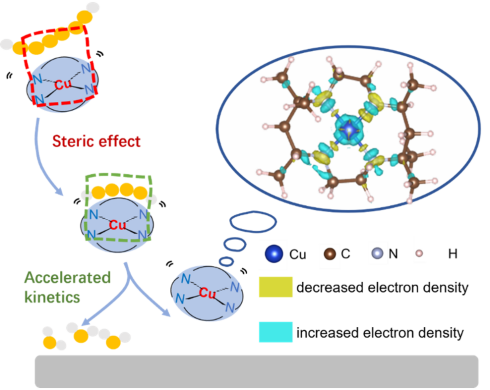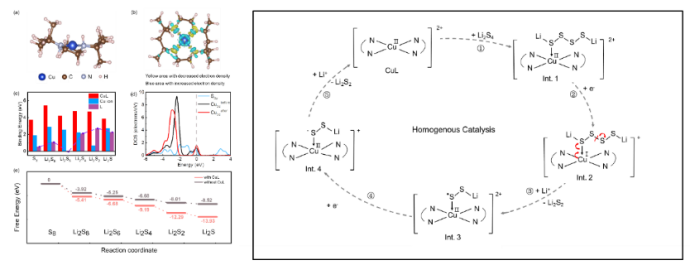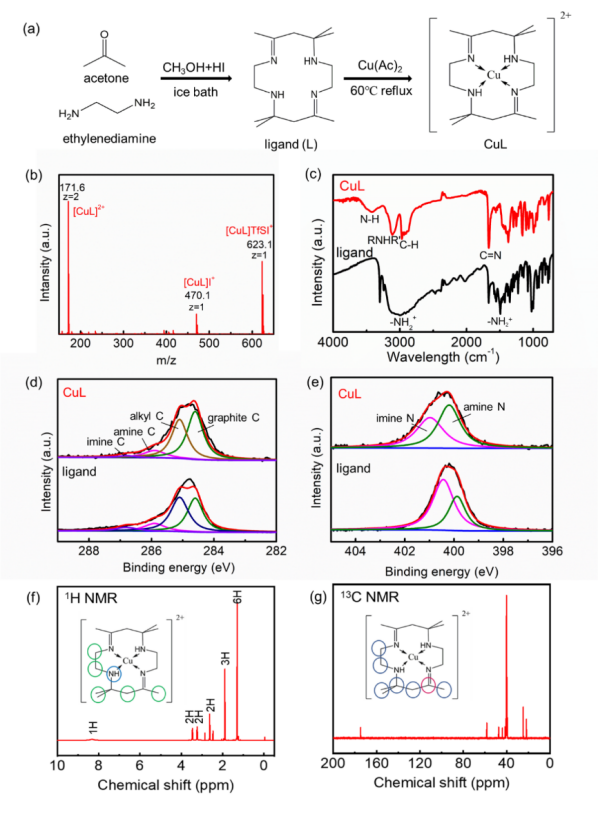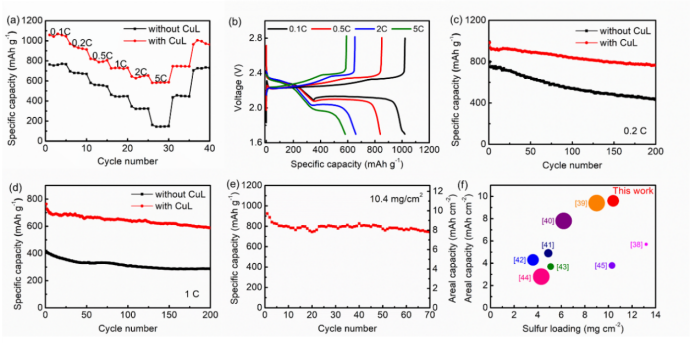Recently, Yang Ying’s research team of the Department of Electrical Engineering and Applied Electronics (EEA) at Tsinghua University and Lu Jun’s research team of the College of Chemical & Biological Engineering at Zhejiang University proposed using ligand structure to regulate spatial hindrance, screen the size of polysulfides, and achieve selective catalysis of the rate-determining step (from Li2S4 to Li2S2) of polysulfide conversion.

Design concept
Whether high-loading sulfur cathodes can achieve high-rate, long-life charge and discharge is an important factor affecting the practical application of high-energy density, long-life lithium-sulfur (Li-S) batteries. However, the solid-liquid-solid multiphase conversion redox reaction rate of sulfur cathode is slow, resulting in low utilization rate of sulfur and polysulfides, and rapid decay of battery capacity. Although the introduction of catalysts can solve the rate of multiphase conversion, the current catalyst loading quality ratio is mostly higher than 10%, which is far from practical application.

Mechanism of CuL homogeneous catalysis

CuL synthesis and structural characterization

Electrochemical performance of lithium-sulfur batteries with 1 wt% CuL added as catalyst
The study achieved a high initial capacity of 925 mAh g-1 and a surface capacity of 9.62 mAh cm-2 with a low decay rate of 0.3%/cycle, using only 1wt% CuL homogeneous additive, under a high sulfur load of 10.4 mg cm-2 and a low electrolyte/sulfur ratio of 6μL mgs-1. The design principles and preparation techniques of the homogeneous catalyst are expected to promote the practical application of high specific energy and long-life lithium-sulfur batteries.
The related results were published under the title of “Self-Assembled Macrocyclic Copper Complex Enables Homogeneous Catalysis for High-Loading Lithium-Sulfur Batteries” in Advanced Materials.
The work was funded by the National Natural Science Foundation, Zhejiang Natural Science Foundation, and the State Grid Technology Project.
Paper link: https://doi.org/10.1002/adma.202300861

















 News & Events
News & Events